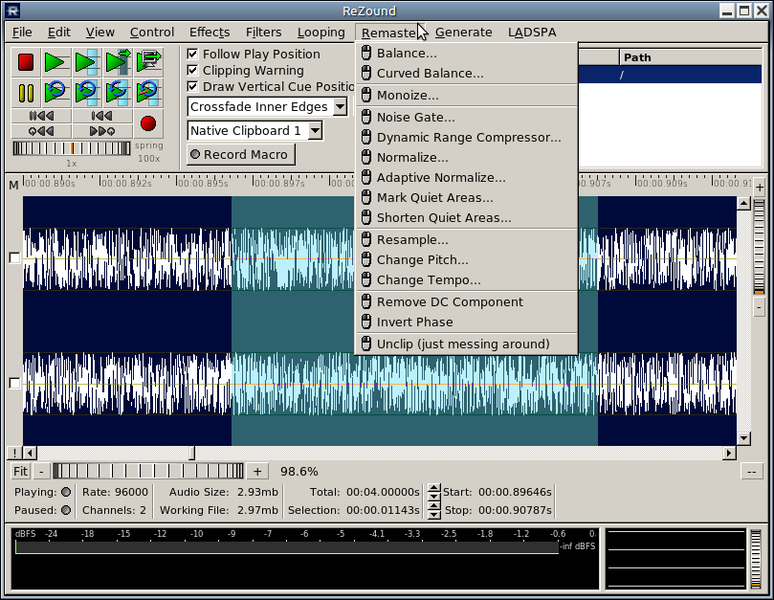

- #Mp3 normalizer boost windows 10 how to#
- #Mp3 normalizer boost windows 10 full#
- #Mp3 normalizer boost windows 10 software#
Spotify: -14 LUFS, -1dBTP (for quieter masters) -2dBTP for louder masters, Ogg VorbisĪpple Music: -16 LUFS, -1dBTP, AAC/256kbps Here is a helpful list of each streaming service, the integrated LUFS they target, a good max dBTP for the platform, and the audio codec they use to when streaming audio. ConclusionĮach streaming service is unique and introduces different settings when affecting your audio. Regardless of the audio codec, you cannot make the audio have peaks higher than -2dBTP. Netflix’s audio codec settings are incredibly complex and depend on the video format used, the region it’s streamed in, and the device it’s being streamed on. Netflix will not accept any videos with audio louder than these 2 metrics, meaning it also normalizes audio upward. Netflix normalizes audio much differently than other audio streaming services – it only accepts files that are lower than an integrated -27 LUFS, with a max peak of -2dBTP. How does Netflix use Loudness Normalization? It’s best to master your signal peaking at -2dBTP. The loudness which Spotify normalizes to is typically an integrated -14 LUFS.
#Mp3 normalizer boost windows 10 software#
Spotify uses ReplayGain to measure the loudness of a signal – software which measures the RMS of the signal in 50ms increments and then applies clean gain to increase or decrease the integrated LUFS.

How does Spotify use Loudness Normalization? Let’s cover how they specifically affect a track prior to streaming. Now that we better understand some of the definitions relevant to loudness normalization, and that streaming services are different in how they process audio, it helps to understand the specifics of what Spotify, YouTube, and other streaming services do to a signal. The audio codec used by these services will vary as well. Loudness normalization occurs differently from streaming service to streaming service, as some have set a different target LUFS than other services – additionally, some use different measurement systems which may cause differences in playback levels from service to service. How Does Loudness Normalization Happen on Different Streaming Services? Encoding can increase the volume of a master by 1dB. Encoding can increase the amplitude of a master by up to 0.5dBTP, if not more in some circumstances – meaning it needs to be factored in when mastering. How Does Encoding Affect the Loudness of a Master?Īlthough Loudness Normalization affects the loudness of a master more aggressively, the process of Encoding also affects the loudness of a master. Sometimes, ReplayGain is used synonymously with the term Loudness Normalization, so if you come across it, just know that its software which normalizes the loudness of the audio. ReplayGain measures the RMS of a track prior to its streaming and applies to gain amplification or attenuation in accordance with its target integrated LUFS. ReplayGain is a popular loudness normalization software and is used by Spotify to normalize the loudness of tracks streamed on their service. We offer some easy to understand information about headroom, without getting too weighed down in technical info. If you want to learn more about dynamics, especially how they relate to mastering music, check out our video and blog post on the topic: Loudness Normalization rarely affects the dynamic range, but if the signal being normalized is very dynamic, and is turned up enough, a peak may be limited during loudness normalization. The dynamic range of a signal is the difference between it’s quietest level and it’s loudest level or its loudest peak. What is a Dynamic Range and is it Affected by Loudness Normalization? This ensures that loudness normalization does not cause clipping distortion.

Streaming services measure the dBTP as well and introduce a limiter when the peaks approach 0dBTP. dBTP takes inter-sample peaking into consideration, as it measures the signal between a digital recording’s samples – this makes it a more accurate form of peak measurement. Whereas an integrated LUFS measures the perceived loudness of a signal, dBTP is used to measure the momentary peaks of a signal. A 1dB gain increase roughly translates to an increase of 1 LUFS. An increase of 1dB is almost equivalent to an increase of 1 LUFSĪs we covered in the previous section, a track’s amplitude is altered in dB when it’s being normalized.
#Mp3 normalizer boost windows 10 how to#
An integrated LUFS is used by streaming services to determine how to alter a track’s gain, as a set integrated LUFS is programmed into the streaming service. What is an Integrated LUFS?Īn integrated LUFS is the measurement of a signal over time and offers a good indication of the perceived loudness of a track.
#Mp3 normalizer boost windows 10 full#
It’s full of great information on audio mastering, and how you can create a great sounding master.


 0 kommentar(er)
0 kommentar(er)
